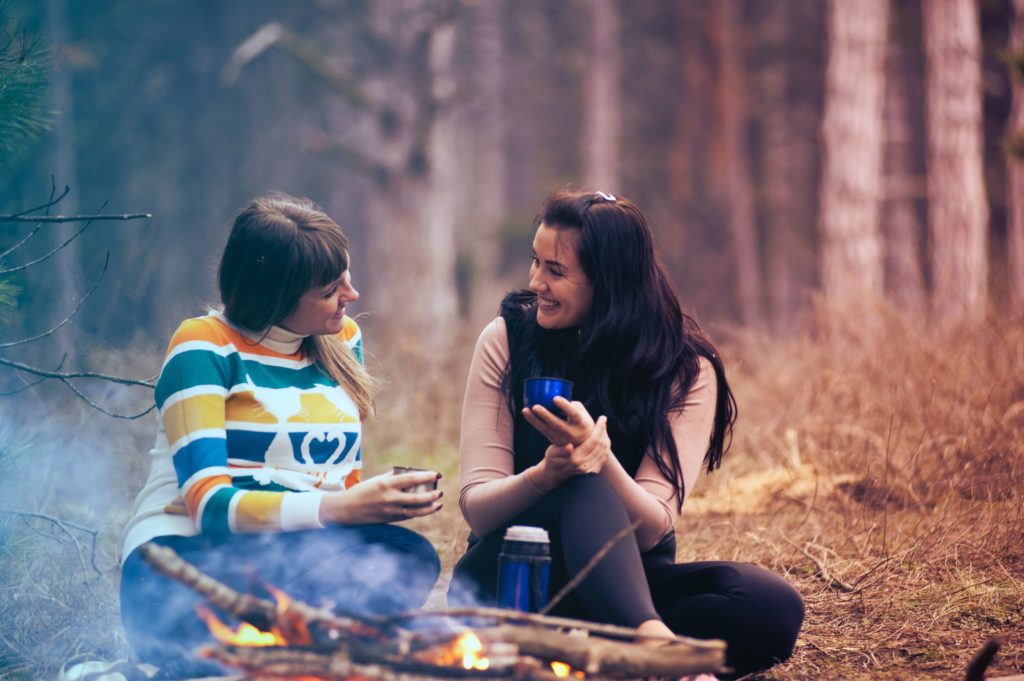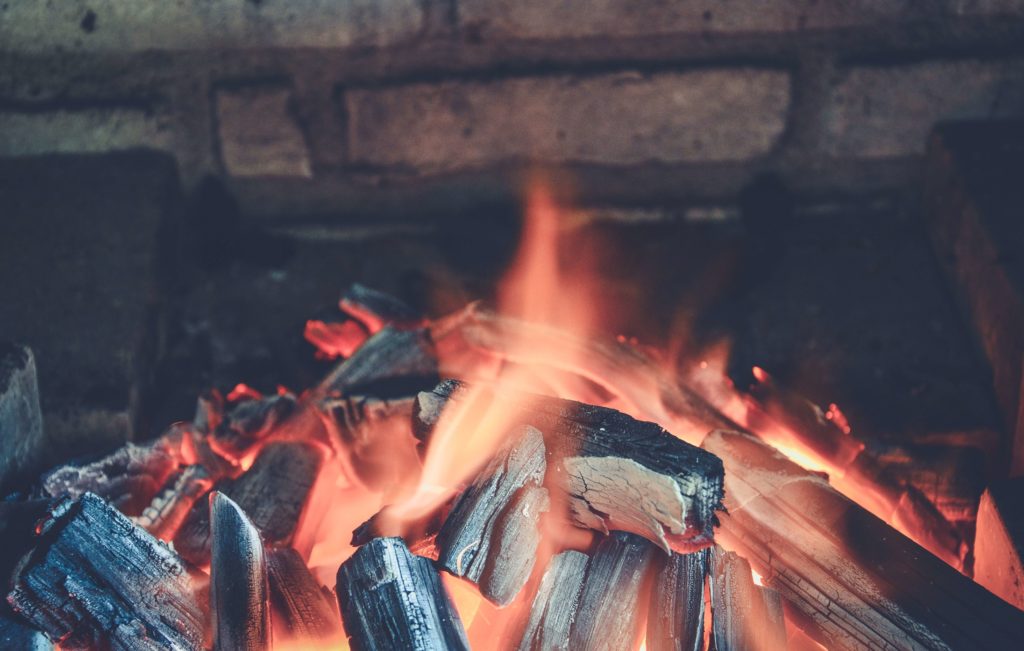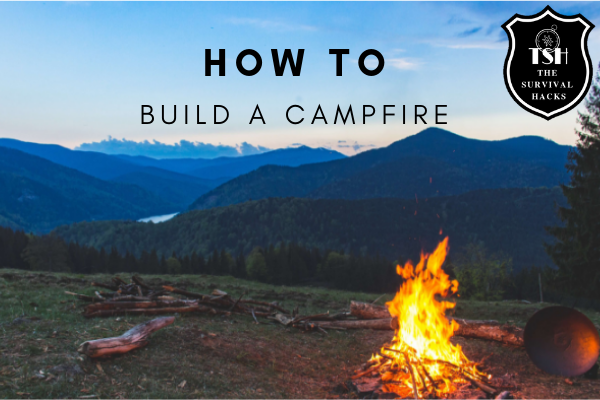Being able to build a campfire is what separates the boys from the men. You can get lucky when finding water or hack your way through making a shelter, but you cannot do the same for creating a fire.
The ability to build a campfire is often overlooked, where it is ‘less important’ as compared to providing food, water and shelter. However, if you are caught in extreme weather and suddenly the grid fails (no electricity is supplied to your home), making a fire to keep yourself warm would be the first priority.
Since being able to start a campfire is such an important skill, knowing just one way to start it won’t be enough. You may also need to stock up on fire starters in your bug-out bag so that you can easily start a fire with the aid of tools.
There are essentially three parts to this post: (I) Benefits of making a survival fire; (II) modern tools to start a fire and how you can use it; and (III) how to start a fire using primitive fire making skills.
(I) BENEFITS OF MAKING A CAMPFIRE

Why do you need a survival fire? Imagine yourself being caught in a snow storm or a hurricane which caused the grid to fail, you have no choice but to find a way to get heat to keep you and your loved ones comfortably warm.
It does not matter whether you decide to bug-in or bug-out, because your surroundings are still the same temperature. You do not need it to be snowy cold, as long as it’s beyond the range which your body can take it would be a sign of trouble.
Also, when disaster strikes, the utilities which our modern society heavily rely on such as clean water, electricity and gas would be stopped. A survival fire is necessary for your long-term survival, it does not matter whether you are bugging-in or bugging-out.
Reason 1: Getting the warmth that you need

If you are able to build a nice and big fire, you can mitigate the chilling effects of the cold winter. When its winter and SHTF, your shelter would not be sufficient to keep everyone warm. The main risk of cold weather is hypothermia, followed by frostbites and dehydration.
You have to prepare specifically for warmth in the night as well, bearing in mind that you can make it a few days without food or water, but only a few hours if your body is too cold. This would especially be true if you do not have a decent shelter for protection.
Since body heat is one important aspect for survival, you need to do your best to keep it trapped in your body so that it does not escape. Building a fire would at most cause your surrounding environment to be a bit warmer, which is sufficient to help with containing some of your body warmth.
Reason 2: Signal for help
Signal fires is a classic way to call for help. Such fires must have several characteristics, including being capable of putting off heavy smoke during daytime and shine bright enough when the sun sets. The best way to build a daytime signal fire is to build a log cabin-style fire, one of the primitive fire making skills (it is considered primitive because it uses natural materials).
By building the right type of fire, you can easily attract attention to your location. Of course, there are some fires which are built that seems to be virtually invisible. These kinds of fires can be built when you do not want to be seen, it is called the Dakota fire hole.
Reason 3: Cook food and boil water

Concerning cooking food, it is necessary if you are planning to consume wild meat including fish, squirrels or insects to get energy. If you consume them raw, it may cost your health. Cooking them will rid them of germs and bacteria which are the culprits for deteriorating your health. As a plus-point, smoky flavor can make your food taste good!
As for boiling water, it is one of your best bet for purifying water. You can be sure that boiling water will destroy all bacteria and viruses present. Although you have other options such as using a modern camping stove, but a survival fire is your best bet if you do not have any other tools with you.
If you drink water from lakes or streams, it is better to purify it because the bacteria present in the water may weaken your body if consumed. Iodine tablets are great but there is only a limited amount of it. As for water filters, it may not be as effective as boiling water. If you are looking to long-term survival, you must acquire this skill.
To boil water, you must not just be able to start a fire, you must be able to sustain a strong fire long enough to boil the water. This means that what you do to keep the fire right after it is started is vital, once the fire go out then you will be back to square one.
Reason 4: See clearly even when its dark
Fire produces light which is really important in survival situations. Only when you are able to see in the dark, you get to continue with your work (collecting surrounding dry branches for example) or identify any incoming threats.
The possibility of you stumbling into a rock and injuring yourself would be less likely if you can see clearly. Don’t feel like sleeping? No worries, build that survival fire and continue with your survival tasks.
Reason 5: Repel insects and predators

The smoke that is produced from the fire serves as an excellent insect repellant. That is why having small fires around the places where you sleep would be effective in getting rid of insects. Once the smoke gets into your clothing, the insects will seldom approach you too.
Most of the predators try to keep a distance from burning flame because fires usually happen as a result of getting hit by lightning or a spark which may cause a wildfire. Hence, building a fire would be effective to ward off the animals when you want to rest and keep your guard down.
(II) MODERN TOOLS TO START A FIRE AND HOW YOU CAN USE IT

When I talk about ‘modern tools’, I mean those fires which are started using a survival fire kit. In these kits, it has to contain tinder which are materials that will easily light up by a spark and can burn for a sufficiently long period of time. From then on, you can decide to add wood, where you slowly increase the size of the wood you place as the fire grows bigger.
So, in this section, I will list out what are the tools you can store to make a survival fire and how you can use them. I would like to raise a caveat where I am not proposing to only stick to primitive
Item 1: Tinder

This is the first in the list due to its importance. Without proper fire tinder, you cannot easily start and sustain a survival fire.
So, what makes good kindling?
If you are looking to DIY fire kits, you should place a handful of cotton balls into a plastic bag and if you want, you can soak them with petroleum jelly. As for tinder in the wild, you can try to look for wood shavings or pine needles in your tinder bulk.
You can stock up some commercial products including some InstaFire and WetFire cubes. Try not to deplete these limited supplies in your fire kit and instead try to look out for natural tinder in your surroundings to keep the fire going.
Let me delve a little more about tinder bundle because of its importance. The general characteristics of your tinder bundle include the things being dry, with the exception that it is mixed with combustible liquid; it being fibrous where the more fibers there are, the better; and it cannot be too small where the tinder bundle may be burned finish in just a short period of time.
If your tinder bundle only burns for a while, your opportunity to place in more kindling material would be less too. Remember that your tinder bundle’s purpose is to catch spark and burn long enough so that you can put in other kindling pieces. If you have collected a really good tinder, it should catch fire with just a spark or an ember.
After laying out the general idea of what you should look for in a fire tinder, here are some things you can look to build your tinder bulk: paper, cry coffee ground, steel wool, oil-based markers, crayons, human hair and duct tape.
Item 2: Ferro Rods
Ferrocerium rods (‘Ferro rods’) are mainly used to make sparks which are essential to start a fire. Some people prefer matches over these rods, but it’s a matter of preference.
Ferro rods are metal that will emit a shower of sparks when it is scraped with something with a sharp edge. You can even have a thin ferro rod and it will give you hundreds of fires (by producing sparks).
There are two ways of using Ferro Rods: (1) hold the scraper immediately adjacent to the tinder and pull the rod towards you while you are holding it tight against the scraper, directing the sparks down to the tinder bulk; and (2) point the ferro rod at the tinder and move the scraper down the rod towards your tinder bulk.
You will usually get scrapers along with the ferro rods, but any kinds of sharp edge should be sufficient. Ideally, the scraper you choose has a 90 degrees angle.
Item 3: Disposable lighters

You can always learn how to make fire with bow drills or employ primitive methods for it, but it would be wise to still pack a lighter with you. By using these tools, you get instant fire that is capable of lighting any form of tinder which you prepared.
It would be good to invest in a good lighter as well, not those cheap ones since we are talking about survival. Cheap lighters made from weaker materials do not last very long as compared those quality ones.
While keeping a lighter in your fire kit, it would be wise to tie something around the button to prevent it from being pressed accidentally. You can use a jute twine or cut out paper to tie it around, where they can make up the tinder bulk as well.
(III) HOW TO START A FIRE USING PRIMITIVE FIRE MAKING SKILLS

If you are building a primitive survival fire without the aid of any modern tools, your tinder bundle should be around the size of a basketball. You have to get big tinder bundles because you will most likely fail in making a good fire which sustains if it is not big enough.
The above section concerning the ‘modern survival tools’ are actually tools that helps you to spark a fire rather than maintain the fire. For maintaining fire, the ‘modern ways’ are usually those that involve makeshift methods, involving parabolic lenses, a shiny metal bowl and reflective cups. Other than these creative ways of using modern-day items, you have to resort to primitive fire-building skills to build a huge and warm fire.
For the third part of this post, I would like to split it into two sections: (A) Basic steps to build a primitive fire and (B) Different fire lays for survival.
(A) Basic steps to build a primitive fire
Step 1: Getting your fire platform ready
Here, I will help you identify steps in building a fire.
First, you need to build a good fire platform because it is the foundation for your fire, where it would be put to the test when you are in snowy or wet environments. The fire platform would be keeping your tinder and the flame you started off the cold ground.
How can you construct a fire platform? It should not consist of any kind of moisture because it will affect the effectiveness of the fire-starting materials. Your platform can be made from various materials including flat rocks, big logs or the trash can lid (although I know it’s not a primitive material!)
There are several ideas you can employ to build a fire platform including a wood branch fire platform; a tree bark fire platform or flat-rock fire platform.
Step 2: Placing some backer logs on the platform
After getting a sufficiently dry platform, it is time to place the backer logs on top. Backer logs are usually small logs which has a diameter around 4 inches to 6 inches (10cm – 15cm).
So, why do you need these logs? First, these logs are great for blocking win only if you position the logs properly. Next, after kindling the bulk of tinder, the logs can allow the fire to ‘lean’ on it rather than letting the fire spread. Lastly, this kind of formation would allow oxygen to go in from both sides and underneath, which is critical for maintaining the fire.
In this step, it is where you explore different fire lays to build the fire you want. The benefits and steps to build the different types of fire lays would be explained below (in Section (B)).
Step 3: Lighting the tinder bundle
After preparing your platform properly, it is time to put the tinder bundle (the size of a basketball) and start lighting it! The flame should ideally be protected from surrounding wind and the logs should keep the warmth trapped within it.
The pile of kindling should be big so that you have a higher success rate of starting the fire. Also, remember that a fire requires feel to be maintained, and just one or two sticks you found surrounding you won’t help. You may even need to feed the fire with few handful of kindling.
You can try out different techniques to start the fire. You can try using flint and steel, where you strike the carbon steel (boot knives) against the flint and let the sparks fly to your tinder. After that, gently blow the sparks that fall on the tinder so that it ignites. Once it starts to get some momentum, add more kindling to the fire.
Another method you can try is the ‘fire plough’ method where you rub two sticks together. One of the stick will act as the base board while the other stick will act as the plow stick. Please see the video to learn more about this method!
(B) Different fire lays for survival.
There are different styles of fire you can build to suit different environments, and these are called fire lays. Similar to the different types of survival shelters you can build for different environments, there are different kinds of fire as well.
1. Teepee fire
The Log Cabin-style fire would require a small teepee fire beforehand. Hence, I would like to start by describing how to make a teepee fire.
The teepee fire is usually referred to as a bonfire. Therefore, the steps below can also be considered as ‘how to build a bonfire’.
Let me start by explaining what a teepee is. A teepee is a cone-shaped tent which was used by American Indians. It will usually be covered by animal skin or a canvas. This style of fire is named ‘Teepee fire’ because the structure is similar to that of a cone-shaped tent, where you would place 3 to 4 kindling twigs on top of the tinder like a cone-shaped tent,
Teepee fire styles can produce fast flames, but it burns up rather quickly. The heat that is produced is even suitable for you to boil water if you place a pot right above the teepee. Once the wood and tinder burn up, you can use the remaining pile as fuel for a log-cabin fire too.
Here are the steps:
(i) Place the tinder bundle on the ground (ideally on the fire platform so that it can burn easily).
(ii) Bury four kindling twigs into the ground so that it can form a teepee above the tinder.
(iii) Start placing small kindling twigs against the downside of the tinder while leaving a small opening in the middle so that you can light the fire.
(iv) After placing enough small kindling twigs, start placing larger sized sticks (leaning against the small kindling twigs in a way which gives air spaces between sticks).
(v) Stick four pencil-sized woods into the ground so that it can form like a larger teepee structure covering the smaller one.
(vi) Lean some fuelwood against the support structure so that it can burn easily. Finally, you can start the flame!
2. Log cabin-style fire
If you construct it properly, the log cabin fire can help your fire grow very quickly. This log cabin fire lay can be considered as one of the ‘superior styles’ of fire lays because it is open and airy. Although this style is popular among beginners, it is not advisable to start off with the log-cabin style because it is harder to build a fire with this style.
Also, some people do not prefer this style of fire-building because it is difficult to put things (basically ‘fuel’) into the middle. But, this style can make good coals and can give you a ‘campfire’ look. Here are the steps to build this kind of fire:
(i) You have to first build a small teepee fire (following steps (i) to (iii) of the above)
(ii) Next, place two large pieces of wood in parallel on the opposite sides of the teepee fire. (it is better to put your larger pieces of wood in the base for balance)
(iii) Put smaller fuelwood parallel on the other two opposite sides so that you can stack up the wood. While building the stack, leave some space in between so that you can light the tinder afterwards. If the holes are too small, you may have to use a stick to help you light the tinder.
(iv) Stack smaller pieces of wood until it has a cabin shape. Finally, start the fire! (remember to put extra kindling through the holes to fuel up the fire too)
Here’s a great video on how to build a log-cabin style fire:
3. Dakota Fire Hole
This style of fire is built when you do not want to give away your location, suitable for certain survival situations. It would be less visible as compared to other fire styles, but it is still able to burn effectively. However, this style of fire is not suitable to keep you warm in the cold.
This fire style is the most tedious to build because you need to dig a whole underneath to let the smoke out from a nearby hole (the fire will be burnt on another hole which you have to dig as well). But the bright side is that your fire would not be affected by the wind since its underground. Here are the steps:
(i) Start by digging two holes which are preferably 18 inches to 20 inches (46cm to 51cm) apart and 12 inches (30cm) deep. The small hole (which is meant to give oxygen to the fire) should be situated where the wind would blow first.
(ii) Dig a tunnel which is about an arm’s length to connect the two holes underground. You can either use a small shovel or your boot knife to do the trick.
(iii) Build the fire in the larger hole while the smaller hole is supposed to help provide the fire with sufficient oxygen for combustion.
(iv) You need to build a fire platform by placing stones or wood in the ground first.
(v) I would suggest building a small teepee fire which is much easier to build.
You can see this video to learn more about it too!
Conclusion
So, there you have it! I have covered the uses of a survival fire, what are the modern tools you can look at and some primitive survival fire-making skills. Don’t forget to pack a fire kit in a bug-out bag too! You do not want to risk not being able to make a fire in a cold environment, it may cost your life!
This would complement the part which I talked about briefly concerning building a survival fire as a necessary bug-out survival skill. Don’t forget the basics as well, which is developing the proper survival mentality which includes having positive thinking, being determined to reach predetermined goals and be brave enough to face problems.

